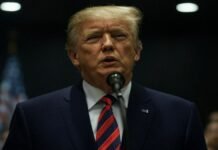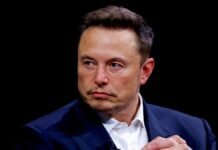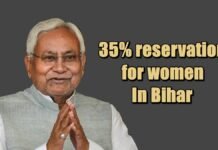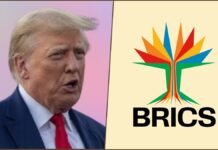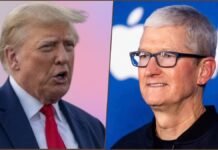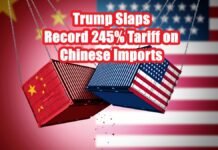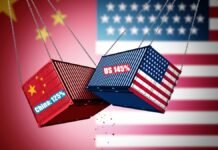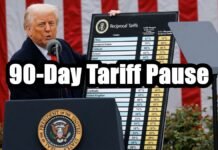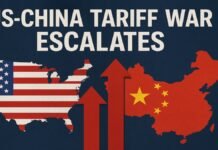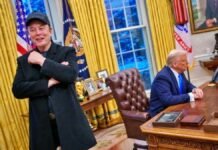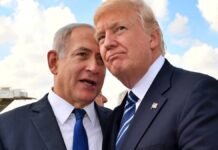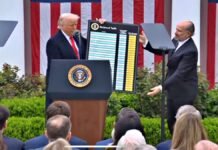
Key Points:
- Trump imposes a 25% tariff on imported cars and auto parts, aiming to boost U.S. manufacturing and generate $100 billion annually.
- Indian auto component exports, valued at $21.2 billion in FY24, face ripple effects through disrupted global supply chains.
- Major Indian players like Tata Motors, Eicher Motors, and Sona BLW brace for challenges, while opportunities emerge for market diversification.
- Global backlash from nations like Canada, Japan, and the EU highlights trade tensions and economic fallout.
New Delhi: U.S. President Donald Trump’s announcement of a 25% tariff on imported automobiles and auto components, effective April 3, has sent shockwaves across the global automotive industry. The move is part of Trump’s broader strategy to bolster domestic manufacturing by incentivizing automakers to relocate production to the United States.
The tariffs encompass not only fully assembled vehicles but also critical components such as engines, transmissions, powertrain systems, and electrical assemblies. According to the White House, this measure is expected to yield $100 billion annually in revenue while reshaping trade policies.
Impact on India’s Auto Sector
While India’s direct automobile exports to the U.S. remain relatively small accounting for just $8.9 million in FY24 the secondary effects of the tariffs could significantly impact India’s thriving auto components industry. In FY24, India exported $21.2 billion worth of auto parts, contributing to a global market valued at $1.2 trillion.
Indian suppliers like Samvardhana Motherson International Ltd, Sona BLW Precision Forgings, and Bharat Forge are deeply embedded in global supply chains that serve American automakers like Tesla and Ford. The new tariffs could increase input costs for U.S.-based manufacturers, reducing demand for Indian components and squeezing profit margins.
Indian Companies in Focus
Several Indian companies are bracing for the fallout:
- Tata Motors: While Tata Motors does not directly export vehicles to the U.S., its subsidiary Jaguar Land Rover (JLR) relies heavily on the American market, which accounts for 22% of its global sales. JLR’s vehicles manufactured in the UK will now face a 25% tariff, forcing potential price hikes or operational adjustments.
- Eicher Motors: The maker of Royal Enfield motorcycles could feel the pinch as its popular 650cc models rely on U.S. sales for growth.
- Sona BLW Precision Forgings: Generating 66% of its revenue from U.S. and European markets, Sona BLW has already begun diversifying into Asian markets like China, Japan, and South Korea to mitigate risks.
Global Reactions
Trump’s tariff announcement has sparked widespread criticism from major trading partners:
- Canada: Prime Minister Mark Carney called the tariffs a “direct attack” on Canada’s economy and workers, warning of retaliatory measures if negotiations fail.
- Japan: Prime Minister Shigeru Ishiba described the move as “extremely regrettable” and hinted at countermeasures while emphasizing Japan’s significant contributions to the U.S. auto sector through investments and job creation.
- European Union: European Commission President Ursula von der Leyen condemned the tariffs as “bad for businesses” and pledged to explore counteractions to protect European automakers like Volkswagen and BMW.
Opportunities Amid Challenges
Despite challenges, experts believe India’s auto component industry may find new openings in this shifting landscape. The Global Trade Research Initiative (GTRI) suggested that India could leverage its competitive advantage in labor-intensive manufacturing and favorable import tariff structures (ranging from 0% to 7.5%) to increase its market share in the U.S.
Additionally, with global automakers reevaluating their supply chains, Indian firms could explore opportunities in Europe, Southeast Asia, and Africa to offset losses.
What Lies Ahead?
The timing of Trump’s tariff implementation coincides with ongoing trade talks between India and the U.S., aimed at improving market access and strengthening supply chain collaboration. A U.S. delegation led by Brendan Lynch is currently in India for discussions that could shape future trade dynamics.
India has adopted a cautious approach, avoiding retaliatory measures while focusing on long-term strategies to adapt to shifting trade policies. Government sources suggest that bilateral trade agreements targeting $500 billion by 2030 remain a priority despite current tensions.
Trump’s 25% tariff marks a pivotal moment for global automotive trade, with significant implications for countries deeply tied to U.S. supply chains including India. While challenges loom large for Indian auto component exporters, opportunities for diversification and strategic adaptation may pave the way for resilience in an evolving global market.





